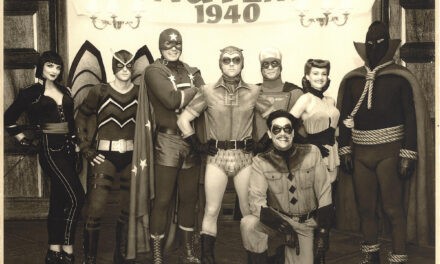With his signature bullwhip and fedora, the familiar sounds of his orchestral anthem, and his eventful explorations into the arcana of world religions, Indiana Jones – archeologist, adventurer, and ophidiophobe – has become one of the most recognizable heroes of the silver screen. Since his debut in 1981’s Raiders of the Lost Ark, Indiana Jones has appeared in three sequels, and Steven Spielberg has recently announced that he will soon begin production on a fifth Indiana Jones film. Along the way, the character has spawned a raft of children’s novels, cartoon and live-action television series, and video and role-playing games. Despite the longevity and popularity of the Indiana Jones franchise, however, it has rarely been the focus of academic criticism, a fact which is surprising considering the critical attention enjoyed by other early George Lucas and Steven Spielberg films. As stories about archeology, the Indiana Jones tales reflect an array of ethical questions and representational issues regarding the nature of the past. As stories about an American man globe-trotting in the middle of the twentieth century, Indiana Jones’s adventures intersect with a wide range of cultural narratives about World War II, the late colonial era, and late-century nostalgia for perceived mid-century ideals. As stories about the sacred, Indiana Jones’s quests engage questions about the nature of the sublime, the representation of the otherworldly, and the role of narrative in constructing reality.
McFarland is interested in publishing a multiauthor volume about the Indiana Jones franchise. While the study will approach the subject from a wide range of perspectives, the book will be centered around the theme of the quest. Indiana Jones narratives are propelled by the pursuit of what Hitchcock called the MacGuffin and what Lacan called objet petit a, and they dramatize and comment upon the nature of loss, desire, and ambiguous retrieval, as well as upon the dynamics of acquisitiveness, appropriation, and possession. Indiana Jones’s reclamation of sacred objects illustrates cultural attitudes about how the past is remembered and preserved (or not), how historical truth is defined and organized, and how socio-political power becomes invested in physical artifacts. At the same time, Indiana Jones films are themselves historical artifacts, glowing with the same shimmering aura of signification that Spielberg’s camera imparts to Indy’s quarries. The theme of the quest, therefore, unites the analysis of individual Indiana Jones texts with the wider analysis of Indiana Jones as a cultural reference point.
Chapter topics may include, but are by no means limited to, such subjects as:
- Representations of: archeology, Nazism, the sacred, the past, colonialism, non-Western cultures, mid-century America, World War II, heroism, paternity, globalization, geography, etc.
- Indiana Jones and cinematic pastiche: the inheritance of Gunga Din (1929), King Solomon’s Mines (1950), The Secret of the Incas (1954), film noir, etc.
- The relationship between the Indiana Jones films and Spielberg’s other films
- Indiana Jones and the “hard body” action hero of the 1980s
- The extended franchise: children’s novels, Choose Your Own Adventure books, role-playing games, video games, “The Young Indiana Jones,” etc.
- Representations of women: plucky sidekicks, damsels in distress, femmes fatales
- Fan culture, from the Gen-X nostalgia of Raiders! The Story of the Greatest Fan Film Ever Made (2015) to the hostile reception of Indiana Jones and the Kingdom of the Crystal Skull (2008)
- Narratology of the artifact: the MacGuffin, le petit object a, the Holy Grail, etc.
- Cultural appropriation and the controversial legacy of Hiram Bingham
- Indiana’s famous fear of snakes and the theme of threatening encounters with different animal species throughout the series
Please send 300-word abstracts to Randy Laist at rlaist@goodwin.edu by September 1, 2018, or feel free to contact me with queries at any time.





